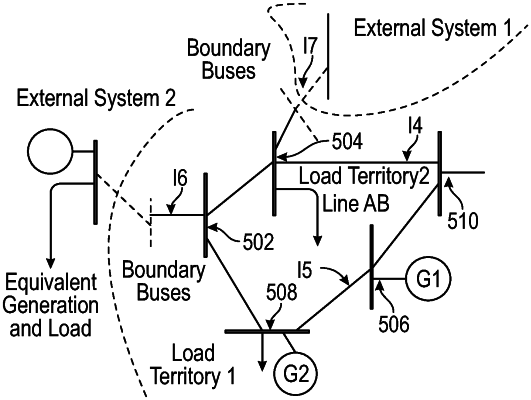| CPC H02J 3/06 (2013.01) [G05B 15/02 (2013.01); H02J 3/38 (2013.01); H02J 3/003 (2020.01); H02J 2203/20 (2020.01)] | 20 Claims |

|
1. A nontransitory computer readable medium comprising instructions executable by a processor, the instructions being executable to perform a method, the method comprising:
receiving a selection of a region of interest of electrical assets of an electrical network;
determining one or more external equivalents of two or more electrical assets of the electrical network that are external to the region of interest;
determining one or more internal equivalents of two or more electrical assets of the electrical network that are internal to the region of interest;
calculating a sensitivity matrix based on electrical impedances of at least one of the one or more internal equivalents within the region of interest and based on an amount of power exchanged by the one or more internal equivalents within the region of interest when in operation;
determining a subset of the sensitivity matrix as indicating highly sensitive buses, each of the highly sensitive buses in the region of interest being sensitive to power flow in comparison with other nodes in the sensitivity matrix;
receiving historical data regarding power flows of any number of the one or more external equivalents external to the region of interest;
predicting power flow for each highly sensitive buses based on the historical data and on power injections associated with the one or more external equivalents that are predicted based on historical data regarding power flows of the any number of the one or more external equivalents;
comparing the predicted power flow for each of the highly sensitive buses to at least one predetermined threshold to determine possible network congestion; and
generating a report regarding network congestion and locations of possible network congestion in the region of interest based on the comparison.
|